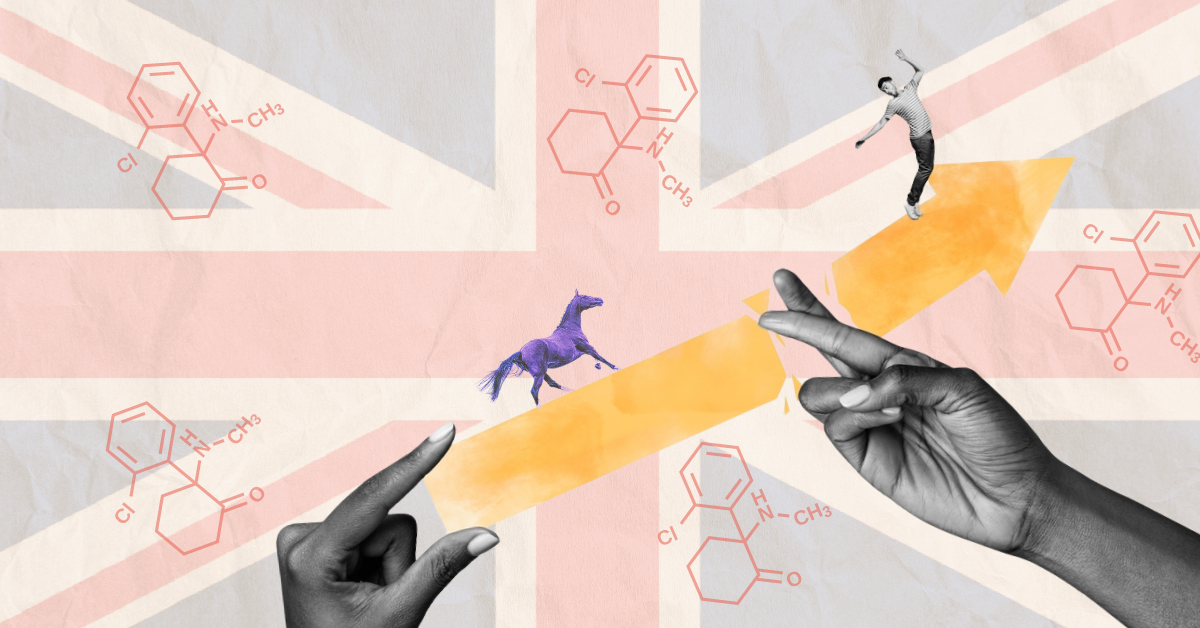In the context of the psychedelic renaissance, a significant body of medical research has developed, exploring how psychoactive plants could help alleviate mental health problems such as anxiety and depression. Besides clinical applications, studies have investigated the power of psychedelic substances to bridge cultural and political divides or change peoples’ environmental behaviours. As such, there has been a Western surge in interest in harnessing the benefits of psychedelics, particularly by the pharmaceutical industry that seeks to standardise, scale and patent these substances.
With the West leading the way on the preferred models of psychedelic access, this journey is set to be one paved with conflicts, power leveraging, and negotiations. A Western dominated psychedelic industry has meant that indigenous, non-biomedical and non-white ways of being, knowing and doing are contested, reappropriated or downright dismissed.
Thus, I want to take the opportunity to introduce the environmental, intellectual and social frictions that emerge when psychedelics undergo globalisation and pharmaceuticalization.
- Facing environmental concerns
First, academics and activists have pointed out that the overharvesting of psychoactive plants, due to their growing demand, severely strain these natural resources. Although the globalisation of psychedelic substances is still burgeoning, indigenous scholars already indicate that peyote is alarmingly scarce in its native territories. Similarly, other researchers have warned that the depletion of ayahuasca resources could pose a non-negligible threat to the already endangered Amazonian ecosystem.
With iboga, activists are starting to map out how deforestation and overharvesting have hindered the shrub’s survival in Gabon. Beyond how much is being extracted from nature, the way in which psychedelic-containing plants are harvested – particularly the practice of uprooting plants that prevent re-growth – worsens the situation. The exhaustive demands of the pharmaceuticalization of psychedelics will encourage extractive and unsustainable practices that completely disregard plant’s regenerative capacities.
This practice is in line with contemporary Western Science to perceive non-human entities, including the environment, primarily as resources to fulfill human requirements. Psychoactive plants are not solely plants anymore: they are transformed into objects of healing and profit.
Such an extractive perspective is not only ecologically problematic, it goes against approaches developed by indigenous communities, which have traditionally been the custodians of naturally occurring psychedelics. Psychedelic-using indigenous communities not only reject the view of nature as a resource to extract, they tend to endorse a symbiotic relationship with their environment, foster an ethos of care toward non-humans, and emphasise one’s relationship with ancestral lands.
Unsustainable harvesting practices of psychedelic plants harm both local and wider ecologies. It is truly bizarre that consumers would simultaneously support the use of psychedelics as a tool to connect with nature, yet support such an extractive industry that is actively endangering its existence.
- Bringing indigenous knowledge to the lab
Not only are psychoactive plants extracted from their native soil as a result of their pharmaceuticalization, but they are also transported into a new knowledge arena. To be considered legitimate drugs on the global pharmaceutical market, the efficacy of psychedelic substances must be assessed through Randomised Controlled Trials (RCTs), which are the West’s biomedical gold standard of evidence. This inevitably generates contradictions.
Shamans often argue that it is not so much ayahuasca in itself that is healing, but rather the ritual ceremony in its entirety: the drug, its specific preparation, the experience itself, the interactions between participants, and the post-experience integration. This vision defies the idea that the molecule found in ayahuasca is the sole active component.
In contrast, RCTs go to lengths to eliminate (or at least mitigate) external factors. They want to ensure that observed effects can be attributed with confidence to the psychedelic substance itself. On one hand, indigenous communities make space for intricate interactions between biochemical and non-biochemical factors, some more difficult to quantify than others. On the other hand, the Western biomedical approach prefers to eradicate other variables to instead focus on the molecular component of a complex psychedelic equation.
Similarly, the interpretation of clinical events during trials is also subject to conflicts. For example, psychedelics-using indigenous communities consider that vomiting on ayahuasca constitutes a form of purification (known as “purga”, meaning to purge). However psychedelic studies have administered anti-vomiting drugs to participants, or discarded the data of those who had vomited, thinking that it would jeopardise results. While vomiting is considered an intrinsic part of ayahuasca ritual, it is dismissed as an unwanted side effect to be eliminated in the biomedical sphere, further testifying to the fundamental frictions that arise when trying to medicalise psychedelic experiences.
- Accounting for racial disparities
Lastly, while pharmaceuticalization might mean that psychoactive substances become accessible to more people, we should stress that non-white, less privileged individuals seem to be left out of these new markets. We consistently see the under-representation of people of colour in Western psychedelic trials. In psychedelic studies conducted between 2000 and 2017, only 2.2% of participants were black compared to non-Hispanic whites who accounted for 82.5% of the participants. This discrepancy might be due to a self-selection bias, where people already interested (and accessing) information on psychedelics apply to participate, or because people from lower socio-economic backgrounds are unable to take time off of work. There are also fears of discrimination and possible criminalisation faced for drug consumption. Similar barriers hinder accessibility to psychedelic treatments. Therefore, these communities are locked out of the healing potential offered by psychedelics, with no concerted effort to include them in the data used to define the future of psychedelic regulation and access. This is particularly regrettable given that ethnic minorities would probably benefit the most from psychedelic-based therapy to deal with race-based trauma.
Despite supposedly enhancing feelings of togetherness, it seems like the reality of psychedelics is much more exclusive and racialised. For now, it appears that the development of valid psychedelic experiences is mostly reserved for relatively privileged white individuals.
Paving the way forward
Thinking early on about the challenges and barriers that the globalisation and pharmaceuticalization of psychedelics may create is important; it lets us understand what are the underlying conflicts within the industry. More precisely, it appears that dominant Western-led anthropocentric dynamics are shaping a future that may be damaging for humans and non-humans.
The above observations show that much work is needed to ensure that the future of psychedelics is fairer for the environment, promotes more equitable knowledge exchange and truly benefits all. It thus appears imperative to come up with a robust legal framework to regulate plant harvesting practices, recognise and protect indigenous communities’ invaluable expertise, and increase the participation of non-white individuals. Only when these conditions are met, will we be able to start considering psychedelics as promoters of harmony and connections, instead of just pretending to respect these values.


